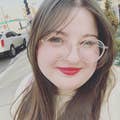The fashion industry's diversity problem has been called out and openly discussed more in recent years. Strides have been made, but due to a decades-long history of focusing on Eurocentric beauty standards, many models from diverse backgrounds face unique challenges compared to their counterparts of European descent.
Here are 15 Latine models who opened up about their experiences and struggles in the fashion industry:
1. Valentine Alvarez told Who What Wear, "I have people message me constantly about how seeing my face somewhere random inspired them to pursue modeling. I can actively see myself changing the industry. I remember being young and flipping through magazines, and the one thing that always stuck out to me was that no one looked like me. Nobody had a nose like mine or my skin tone. Nobody had piercings or tattoos, let alone traditional tattoos."
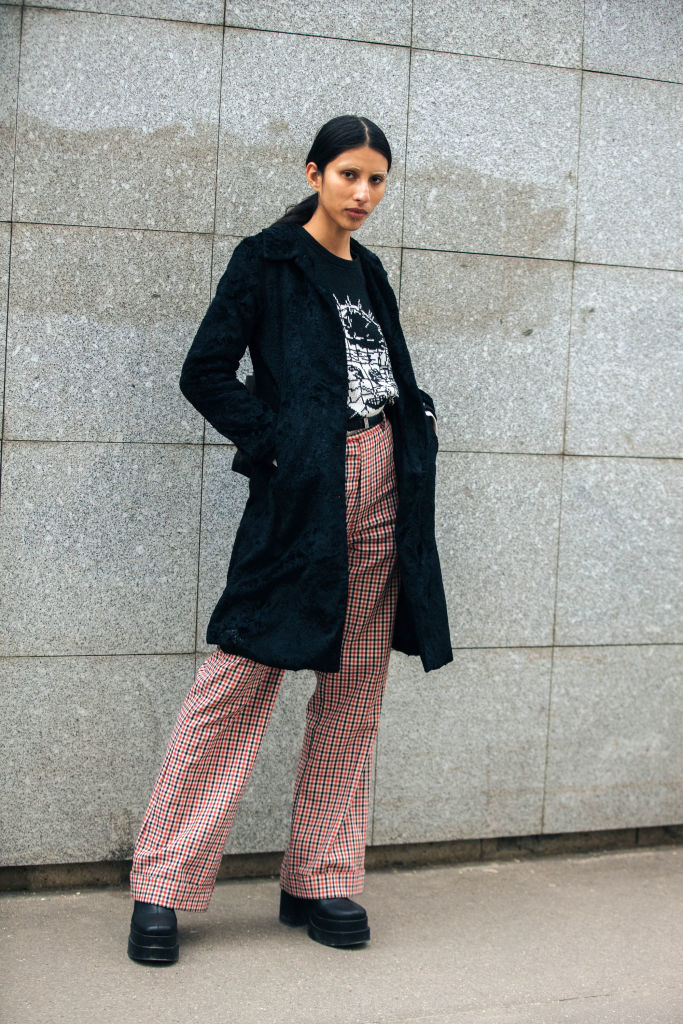
They continued, "Now, we have people like Quannah [Chasinghorse] inspiring Native people all over the world by being the first. It's important to feel like you are a part of this world. It's hard to feel that way when you don't see yourself anywhere, and I'm glad that I can be a part of this amazing group of people who represent their place in this world. ... I really hope that queer, Latinx, and Indigenous people see themselves in me. I hope that I am opening doors for people or at least letting them know that these doors can open for us too. I hope that people with face piercings and big scars and visible tattoos can see me and know that they can be there too. They can work for Fenty. They can walk for fashion shows in Paris. Things that they think are impossible for them are possible."
They also told Vogue, "I never grew up feeling beautiful. I felt like I could never be a model. Growing up, [fashion] was very Eurocentric. Everybody who was [thought of as] the epitome of beauty didn't look like me—they didn’t have a bridge in their nose like I did, and they didn’t have brown skin like I did. Being able to see other minorities flourish [today], it gives you the courage to do it. Also, you really want to be that person for people."
2. Recalling the day of her 2021 Vogue cover shoot, Paloma Elsesser told CNN, "I'm shooting a Vogue cover as a chubby, short, mixed-race woman who never imagined this would be her reality. ... I'm not supposed to be here. I don't look like anyone here. Who am I kidding? I'm not a fucking model."
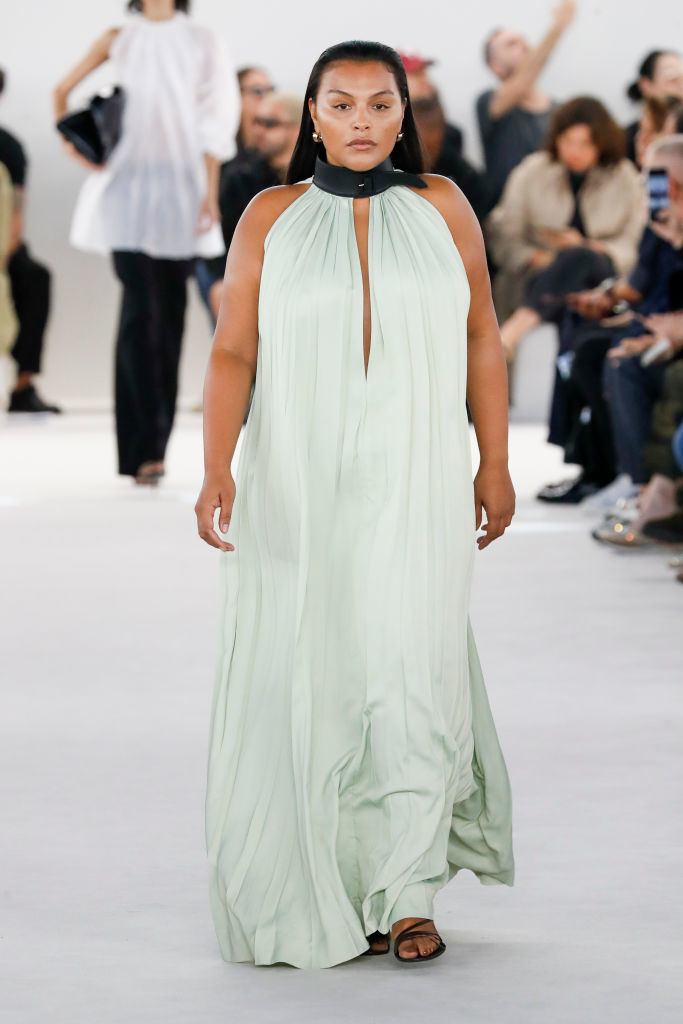
She also said, "I advocate for issues around my body and identity. It's something that always comes up because that's my reality. I'm leaving pictures so maybe a girl hates herself a little bit less. Does that make me a fucking savior? No."
3. On Instagram, Joan Smalls wrote, "There have been so many times where I've had to face issues against my race within this industry because I was their token Black girl. The campaigns and editorials I had to share while my counterparts got to achieve that on their own. Or that my hair was an issue or that I made a show or campaign too ethnic, the list goes on and on."
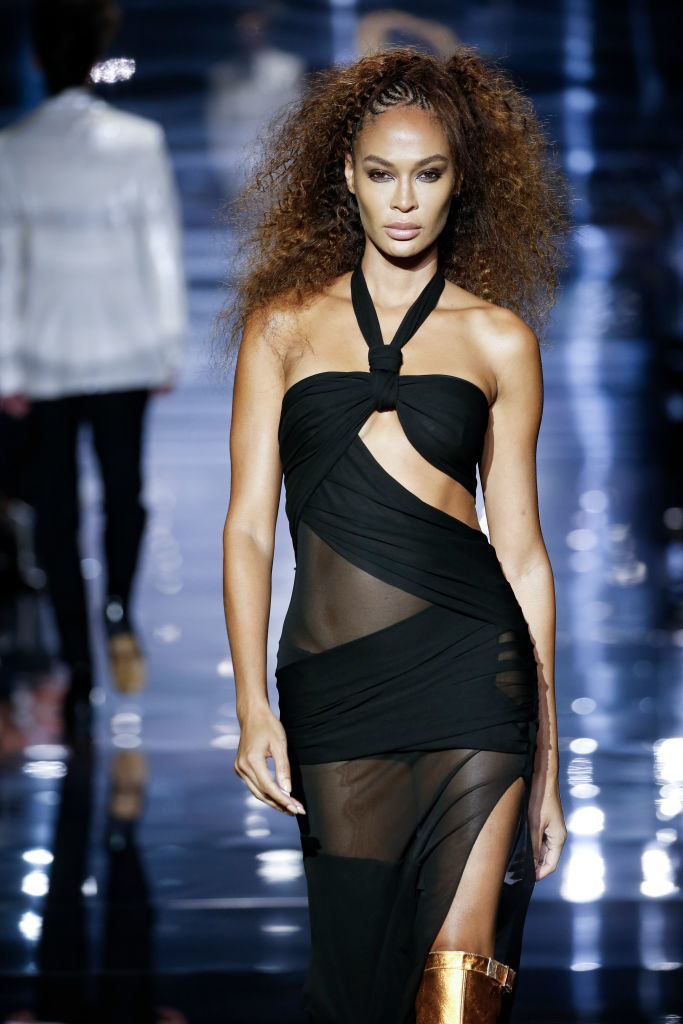
She continued, "This industry that I love has profited from us but has never considered us equal. This. Stops. Now. It's time for the fashion industry to stand up and show their solidarity. Time for you all to give back to these communities and cultures which you draw so much inspiration from."
4. Celeste Romero told Who What Wear, "My first cover with Vogue México was released this past year, and they published an image of my side profile. Growing up, I was insecure about my nose because of bullying, and I never saw anyone on billboards or on covers that looked like me. Through modeling, I have grown to love and appreciate my features. I am proud to be an inspiration for young people to pursue modeling."
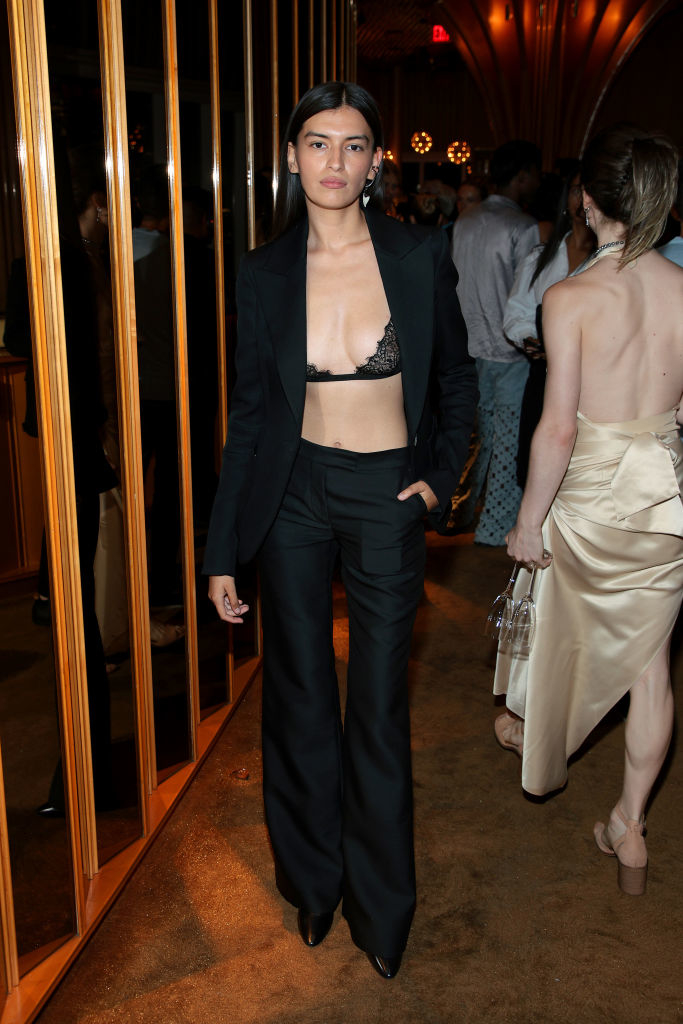
She also said, "I hope my impact is toward young people who look like me. [I hope they] see themselves when they see pictures or videos of me and know that they can be a model, actor, or anything in the public eye as well."
Additionally, she told Vogue, "I'm Mexican and Native, so I have a really masculine face and strong cheekbones. Growing up, I was always like, 'Why do I have this nose?' I wanted the perfect girl's nose with the little swoop. But my great-grandmother always told me, 'You need to appreciate your facial features — they come from very powerful people.'...Every aspect of the modeling world is changing so much, and I feel like I'm starting right in the middle of it. Walking for Gabriela Hearst was amazing to see, because she's so inclusive. The way she also hired Native people to make some of her clothing was amazing."
5. When Ady Del Valle noticed that the Google Image search results for "plus-sized model" were overwhelmingly white, he decided to organize his own photo shoot with other plus-sized Latine models.

She told Teen Vogue, "The way I incorporate my Latinidad in my work and advocacy is always making sure that every opportunity or any work I’m in highlights me as I am: gay, Puerto Rican, and Latino. I always keep in mind my people, and I want to make sure I'm representing us in a light of representation not only as a Latino, but a plus-size Latino. Even in a recent beauty and fragrance campaign that I just shot as the only, and maybe the first, plus-size male model and Latino to be in a major beauty campaign, I wore a Latino-designed piece for it. I want to make sure there’s a piece of us being seen as much as possible."
Ady also told Dazed, "The dial has moved a little bit on the masculine side of plus-size representation, but the intersectionality is not there and there are lots of spaces where that representation can be amplified. ... It's frustrating, and it feels like I'm the only one speaking up. Models that are seen as more acceptable because they're taller or more masculine aren't affected, so they're not vocal about it and I sound like a broken record because I've been repeating myself for the past six years."
6. Sofía Jirau told Tatler, "The main challenge I faced [growing up] was finding out what to do once I graduated from high school. I wanted to work. Unfortunately, there weren’t any jobs for people like me with Down’s syndrome. Then, [Puerto Rican professional development firm] INprende gave me a job opportunity [as an experience ambassador] and I have worked for them ever since."

She continued, "I love working for INprende, and I'm grateful for the entire team because they have helped me accomplish my dreams. People with Down's syndrome are just as capable of working, holding down a job, and developing their own businesses as anyone else."
7. Natalia Castellar Calvani told Sense of Self Magazine, "I see the discrepancies between what clients supposedly advocate for vs. who they actually want to represent their brand. I've gone to countless castings for jobs that are looking for 'diversity' but do not show that in any way."
She continued, "I once went to a casting where I could count the number of non-white models on one hand despite the casting call's brief being amount 'diversity.' It's very unfortunate how brands are quick to market one thing to the public but don't even follow their own ideas."
8. When Anyelina Rosa lived in the Domincan Republic, she faced anti-Black beauty standards. She relaxed her hair, and local designers rejected her. However, as her modeling career took off internationally, she embraced her natural hair and began wearing her hair in an Afro or in cornrows.

She told the New York Times, "Now I have self-love. I don't say, 'I can't,' that I'm ugly, that they won't pick me."
9. Karen Vega told Vogue, "The requirements that have been put in place in the fashion industry in Mexico have meant that only a very small group of Mexicans have been able to get into it. I believe that my agency [Talento Espina] will cause a big change in the city [Oaxaca] and other cities in the south of the country. Right now, most Mexican models are currently from the north."
"We need more representation of Mexicans around the world — and also within Mexico as well as more representation of different types of women and men. Any project that represents my heritage will always make me very happy," she added.
10. Dilone told the Council of Fashion Designers of America, "Being Afro-Latina, being queer as fuck, and being a woman – I didn't have that representation growing up. These last few years, I've come to accept myself: who I am, where I'm from and where I want to go while still being true to myself."

She also said, "It's so important to celebrate [Latine History Month] because our parents work hard. Our ancestors laid the groundwork for us to be able to be here today so I can be as successful as I am as a model."
11. Kengie Smith told Teen Vogue, "I notice there's a lack of acknowledgment and representation for Afro-Latinos in the world. I look at myself in the mirror, and I know who I am, I see the color of my skin, the texture of my hair, my culture, and the language I speak."
"I'm a proud Afro-Latina woman living her dream and walking in her purpose," she said.
12. When Lineisy Montero made her runway debut in Prada's autumn/winter show in 2015, she famously wore her natural hair in an Afro. The following year, she told the Telegraph, "I’ve noticed a little positive change. Before, in fashion shows, all the models were blonde with straight hair, but now there are always two or three morenas [women with darker complexions] with natural hair."
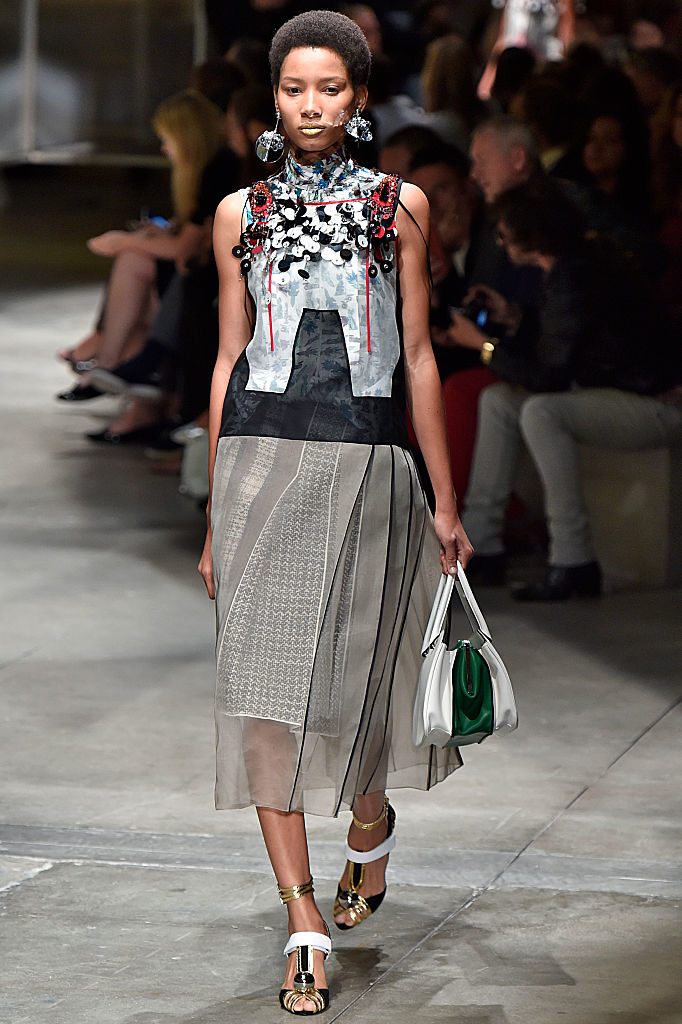
"But there's still a little way to go," she added.
13. Devyn Garcia told The Fashionography, "I see the industry definitely evolving for all body types, but I feel it's gonna take a while."
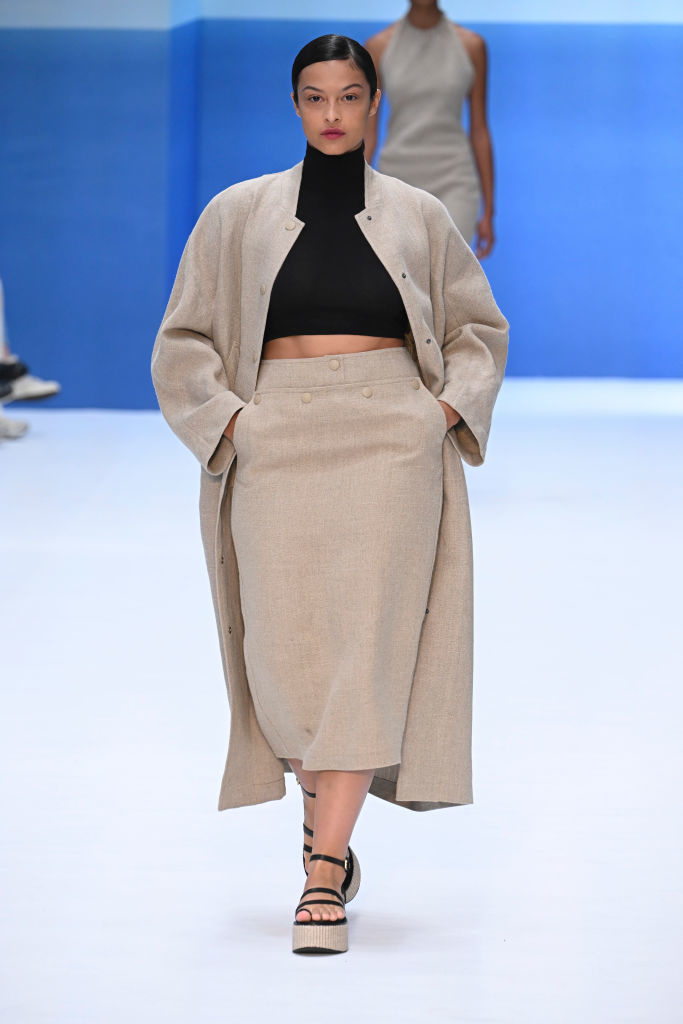
She continued, "It's not going to happen overnight, and I think the way for it to really happen is to see the bigger brands incorporating different sizes into their lines."
14. Denise Bidot told Entertainment Tonight, "My whole life I felt like the Latino community was very, I guess, small-minded in the way that they saw beauty, but it wasn't their fault. It was more of what we saw in the media, even in TV roles. You always saw the Latina girl, she always looked a certain way. For beauty pageants, they are huge in the Latino community and [many girls] unfortunately had to meet these really rigid standards of what beauty was, and because of that, we programmed an entire community and generation of women to think that is what they need to be to be beautiful. So when I was approached by Nuestra Belleza Latina to do this season, we had a lot of conversations before contracts or an offer was put on the table."

She continued, "When they told me the general topic 'sin talla, sin límites, sin excusas' ["no sizes, no limits and without excuses"], I was like, 'Oh my god, that is me in a nutshell' because I really believe that. I don't think women need to be limited. We should put much more value into intellect and kindness, and we don't have many people in that position telling young girls that. So we have a responsibility to the next generation growing up. [Seeing all different body types on TV] makes people feel beautiful, it makes people feel included and represented. And I think when they started telling me what they wanted to do, it came from a genuine place of understanding that we need to evolve and grow and we can do it together in a beautiful way. It was a no-brainer for me. I was like, 'Bring it on! Let's do it. Let's change the world together!'"
15. And finally, Yaznil Baez told Teen Vogue, "Within my work of modeling and social media influencing, I highlight that being Latinx is not something that can easily be confined to a box. There is not only one way to experience Latinidad. It is important to acknowledge how skin color, body shape, size, sexual orientation, gender — and the list goes on — also play within Latinidad."
She continued, "My experience as a Dominican and Puerto Rican plus-size woman will differ from another person’s; but by keeping true to who I am in my work, I show how Latinx people can be high fashion, we can be commercial, we can do it all."
Join BuzzFeed in celebrating Latine Heritage Month from Sept. 15 to Oct. 15.


